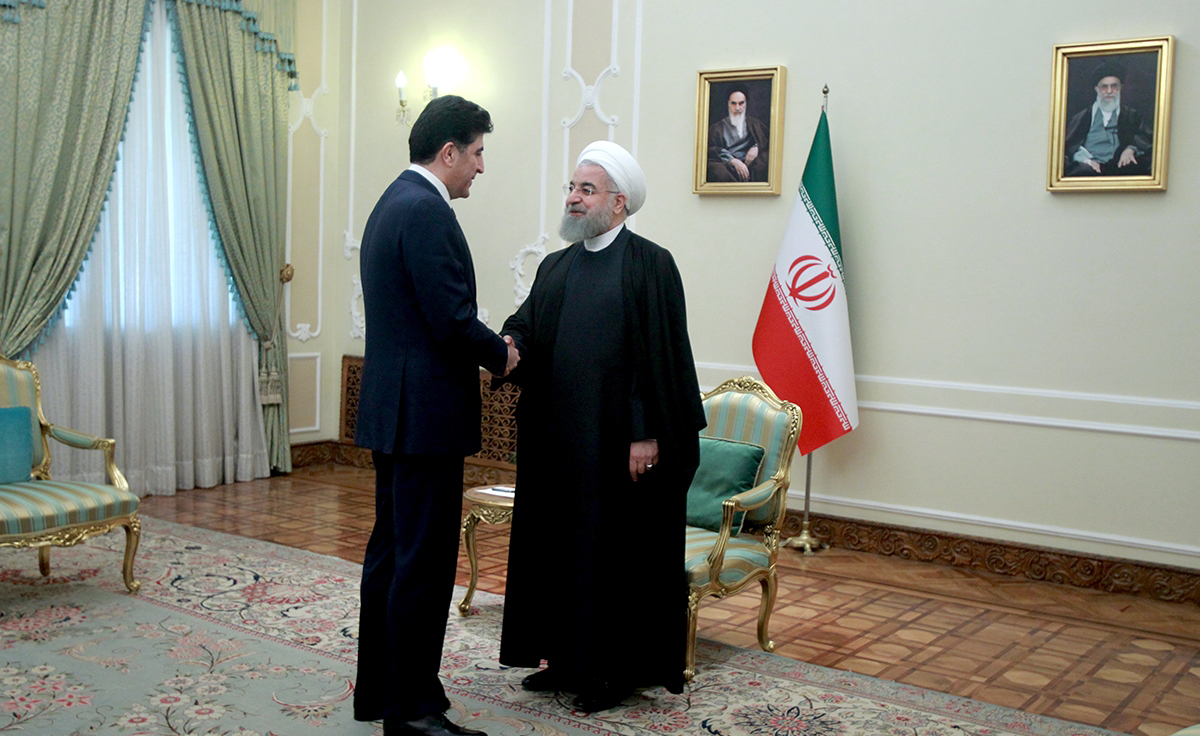Iran and northern Iraq’s Kurdish Regional Government hope to increase cross-border trade volumes by increasing the number of border crossings between them, KRG local officials have been quoted by state-run news agency of the Turkish government Anadolu Agency as saying.
According to Aballah Akrayi, an official at KRG’s Foreign Relations Department, relations between Tehran and Erbil (the KRG’s administrative capital) have thawed noticeably since KRG Prime Minister Nechirvan Barzani visited Tehran last month.
In a meeting between Barzani and Iran's President Hassan Rouhani on Jan. 22, the latter called for closer economic cooperation between Tehran and KRG, saying that Tehran is keen to invest in development projects in Iraq's Kurdistan.
Barzani noted that bilateral trade should be enhanced, noting that Iranian investors are welcome to help implement economic projects.
According to official KRG figures, Iran represents the Kurdish region’s second largest trading partner after Turkey.
In an effort to further enhance Iran-KRG trade, Tehran and Erbil have reportedly agreed to raise the number of border crossings between them to six from a current three.
According to Iraqi government statements, experts from both sides have already carried out ground inspections in areas where they hope to set up new border terminals to ease commercial traffic.
The areas that have reportedly been designated for new crossings are (from north to south) Sairan-Band; Qalat near Sulaymaniyah; and Choshma in Halabja.
Currently, nine official crossings are situated along Iraq’s 1,450-kilometer border with Iran.
A referendum was held in Iraqi Kurdistan on Sept. 25, 201, producing an overwhelming 'yes' for independence from Iraq.
Iraq's Supreme Federal Court ruled one month later that the referendum was unconstitutional and that the results of the vote were void.
Iraq's central government responded to the Kurdish independence referendum with a series of measures.
It seized the Kurdish-held city of Kirkuk and other territory disputed between the Kurds and the central government, according to Reuters. It also banned direct flights to Kurdistan and demanded control over border crossings.
Iran closed its border crossings with the Kurdistan region of Iraq following the vote in favor of independence in the Kurdish area but reopened them later.
The decision came after the Kurdish Regional Government stepped up its efforts to resolve the crisis in relations with Baghdad through dialogue rather than military means.
Tamarchin (also known as Haj Omran) between Iran's West Azarbaijan Province and Iraqi Kurdistan's Erbil, and Parvizkhan between Iran's Kermanshah Province and Iraqi Kurdistan's Sulaymaniyah reopened on Jan. 2, 2017.
The third border crossing between Iran and the Iraqi Kurdistan, Bashmaq, was reopened earlier on Oct. 25 the same day as the Kurdistan Regional Government offered to freeze the results of the Sept. 25 vote as a step toward resolving its disputes with Baghdad through dialogue.
Iran’s Kurdish lawmaker, Heshmatollah Falahatpisheh, earlier said the closure of the country’s border with the Iraqi Kurdistan Region had inflicted losses worth $2.5 billion.
Some experts said Iran was losing out as a result of the punitive measure since Turkey, which has left its borders open, quickly replaced Iranian products in Kurdistan.
The Kurdish region of Iran has significantly high rates of unemployment. The border closure led to loss of job for many locals who usually earn a living by trading goods between the two crossings.
According to Keyvan Kashefi, the head of Kermanshah Chamber of Commerce, Industries, Mines and Agriculture, the closure led to the loss of some 3,000 local jobs.
“Exports and transit through this frontier crossing amount to approximately $3 billion per year and its closure will have a negative effect on the country’s overall exports,” he said.
More than 54% of Iran’s exports to Iraq are conducted through Parvizkhan border crossing.
Iran exported commodities worth more than $3 billion to Iraq during the six months to Sept. 22, with less than one-third of the exports going to the northern Kurdish region.
Iraqi Kurdistan is a landlocked region heavily dependent on its neighbors.


